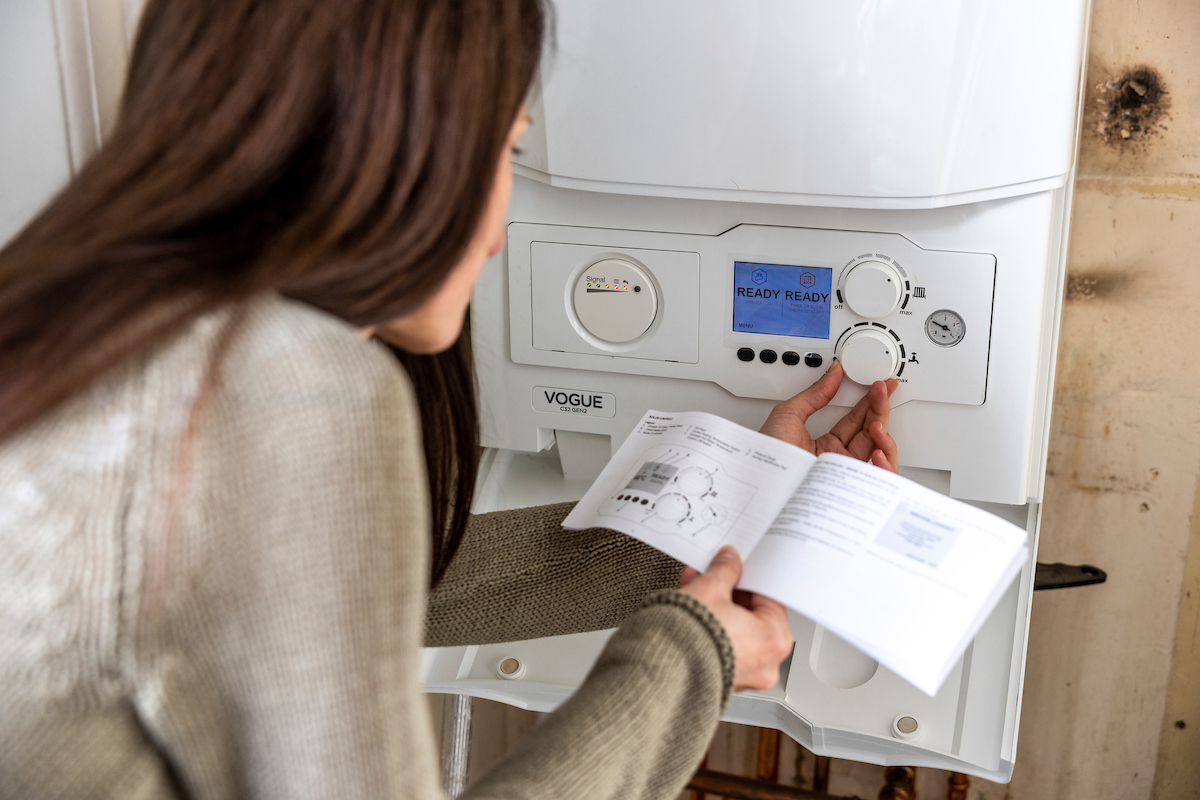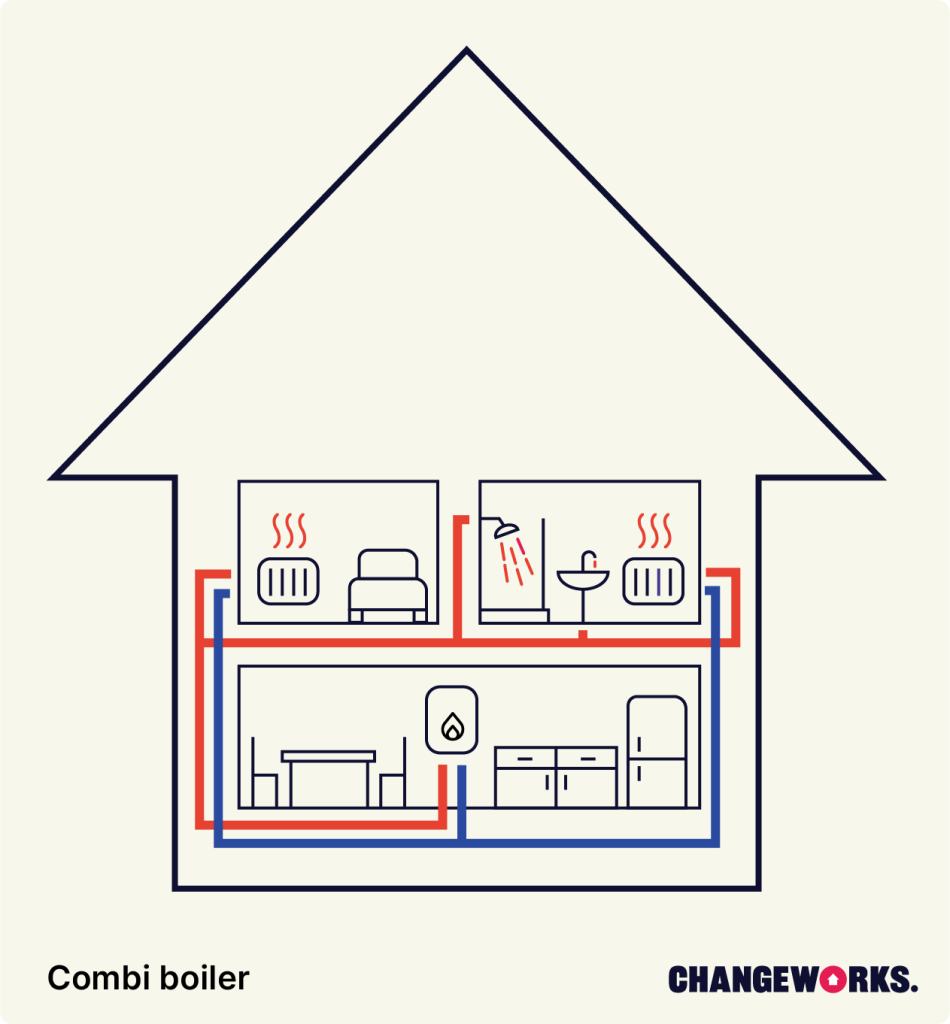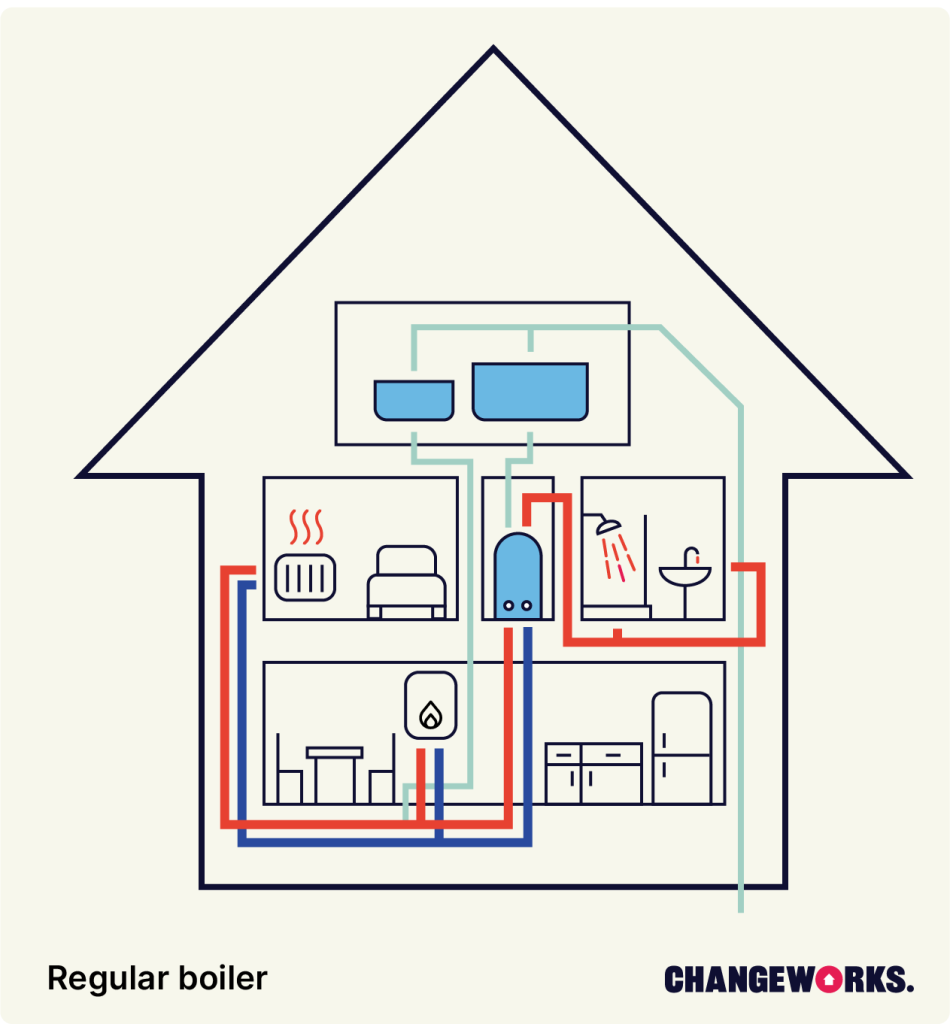Boilers

Boilers are the most common type of central heating in Scotland. Their job is to heat up water, which it sends around our radiators to warm our home.
Some boilers can also send hot water to your taps and/or shower. These are known as combi (combination) boilers. If you don’t have a combi boiler, then your hot water will come from a hot water cylinder. This is a large storage tank which you’ll usually find in a big cupboard.

If you have a combi boiler (no hot water tank), then read on for How to lower your boiler’s flow temperature. You can also learn how to get the most from your boiler by checking out our programmer and thermostat page.

If you have a hot water tank, then skip straight to our programmer and thermostat page to find out how to control your boiler.
How to lower your boiler’s flow temperature
How high the boiler heats the water it sends around your home is known as the ‘flow temperature’. In a lot of cases, the flow temperature is hotter than it needs to be. As a result, lowering the flow temperature can save us money on our energy bills.
The team at The Money Saving Boiler Challenge are confident you’ll save around £112 a year if you set your flow temperature to 60 degrees.
You can change the flow temperature on the boiler itself. The most common controls – and how to use them – are explained below.
Older combi boilers usually have dials or knobs to control the flow temperature. There should be one for the heating and one for the hot water.
If your combi only has one dial, then it’s likely to be for the heating rather than the hot water. However, it’s worth double-checking this in the user guide which came with the boiler.
The heating dial will have a radiator symbol next to it, whereas the hot water dial will have a tap symbol. The heating dial is the one we want to adjust.
The dial might not show the temperature in degrees. It might have numbers around the edge (e.g. a scale of 1-6) instead. Alternatively, it might have dashed lines going from blue (cold) to red (hot).
If the heating dial shows the temperature in degrees, then simply set it to 60 degrees.
If the heating dial doesn’t show the temperature in degrees, then try turning the dial to the halfway point (i.e. the 12 o’clock position).
Once you’ve lowered the flow temperature, you might find your home isn’t quite warm enough. In that case, try turning the dial up slightly. Repeat this until you find a level you’re comfortable with. Even a slight reduction can make a difference to your bills, so it’s worth experimenting.
Your boiler might have dials and a digital display screen. As you turn the dials, the temperature on the screen will change.
To set the flow temperature, turning the heating dial so the display reads 60 degrees.
If you find your home isn’t as warm as it was, then increase the temperature slightly. Repeat this until you find a level you’re comfortable with. Remember: even a slight reduction can make a difference to your bills.
Instead of dials, your boiler might have buttons to control the flow temperature.
These usually have up (˄) and down(˅) arrows or plus (+) and minus (-) symbols.
There should be plus and minus symbols/arrows for both your hot water (tap symbol) and central heating (radiator symbol).
Press the minus (-) button for your heating until the screen reads 50 degrees.
If you find your home isn’t as warm as it was, then increase the temperature slightly. Repeat this until you find a level you’re comfortable with. Remember: even a slight reduction can make a difference to your bills.
Useful pages
Is this page useful?